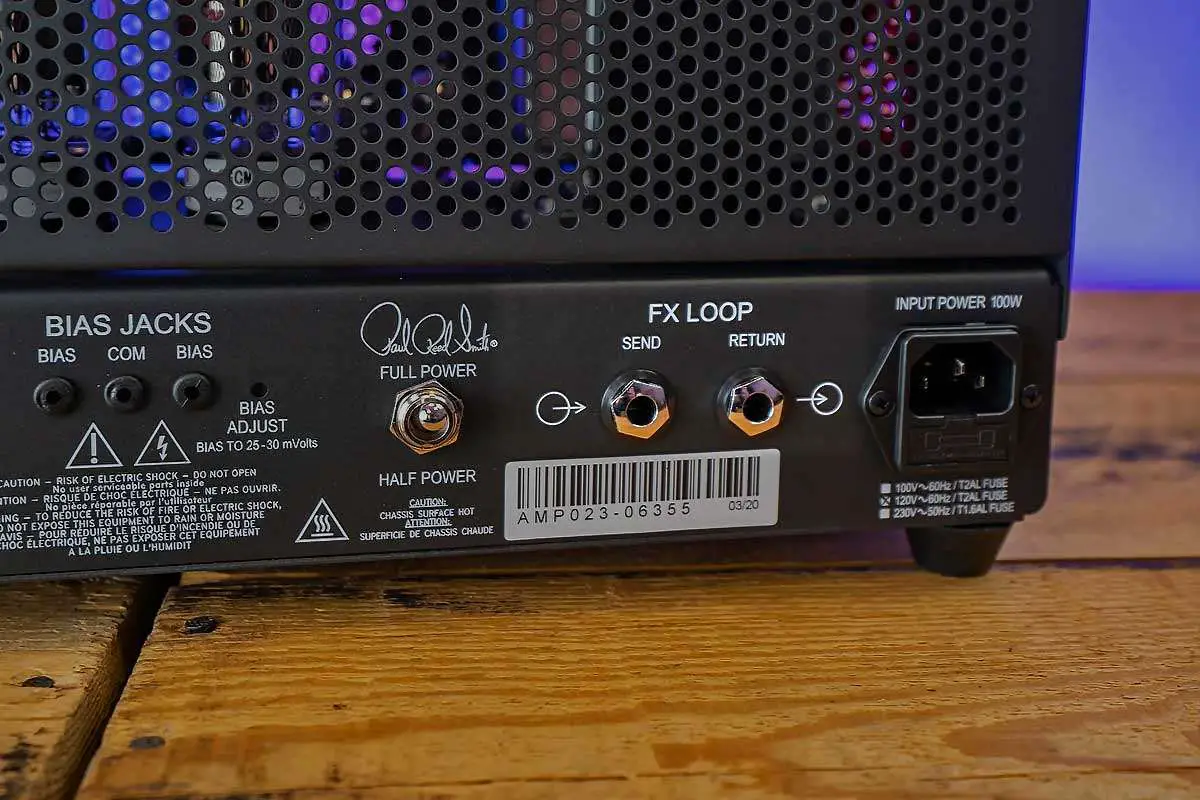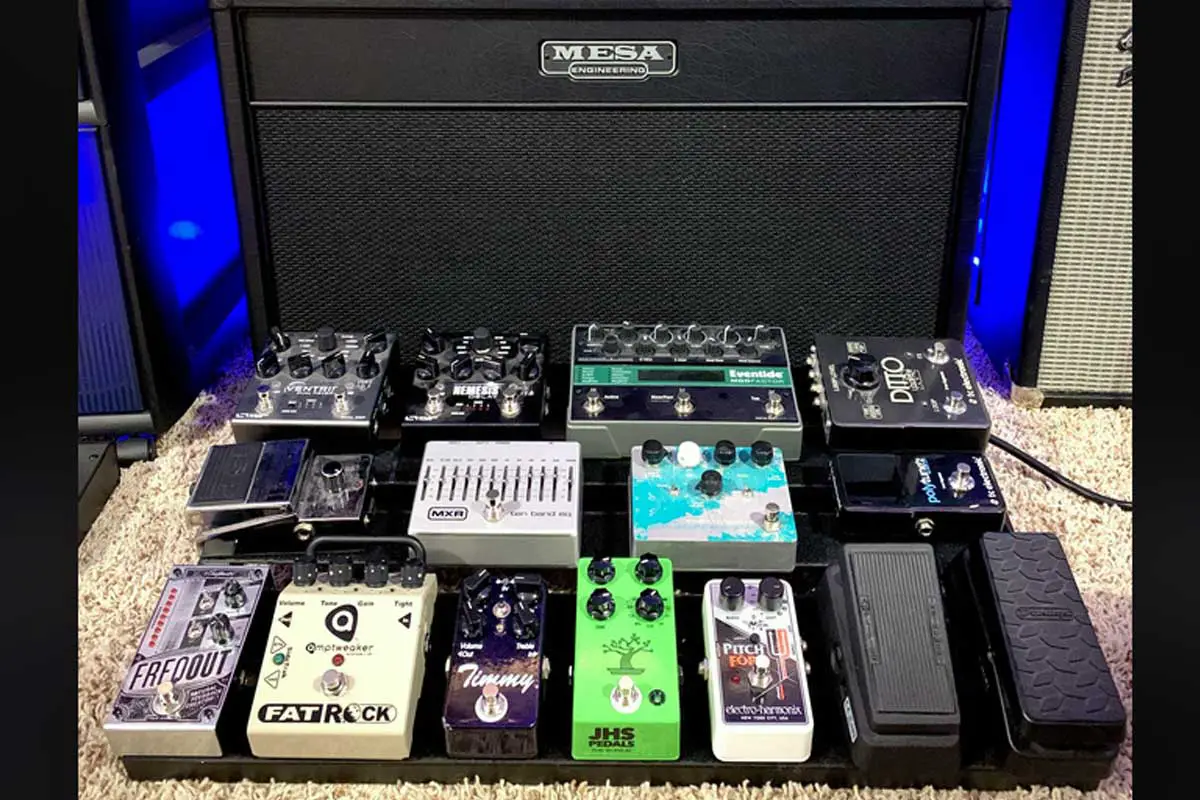An “effects loop” in a guitar amplifier is a vital feature for any guitarist looking to enhance their sound with external effects units. This loop allows you to insert effects like reverb, delay, and chorus into your signal chain between the amplifier’s preamp and power amp stages. By positioning your effects in this way, you preserve the natural distortion of the amp’s preamp without coloring the sound of the effects, resulting in a clearer and more defined tone.
When you plug your effects into an effects loop, you’re effectively bypassing the amp’s inherent tone coloration that would otherwise occur if the effects were placed before the amp’s input. This is particularly useful for modulation and time-based effects that can become muddy or overly pronounced when processed by the preamp’s distortion. Utilizing an effects loop ensures that your core amp tone remains intact while the effects retain their distinct qualities.
Understanding how to correctly use an effects loop can open up a world of sonic possibilities. Whether you’re playing live or recording, the loop can help maintain a high signal-to-noise ratio, keeping unwanted hiss or hum to a minimum. It’s an essential tool that, with the right knowledge and application, can significantly improve your overall guitar sound.

Understanding an Effects Loop
An effects loop in a guitar amp allows you to route certain effects pedals or units between the preamp and power amp stages. This setup can help maintain the clarity and integrity of your guitar’s tone.
The Role of an Effects Loop
Proper use of an effects loop can have a significant impact on your overall sound. Typically, it’s a way to connect time-based and modulation effects (like delays and phasers) after the distorted preamp section, ensuring a cleaner, more pristine application of these effects. For more details, you might want to check out the comprehensive explanation in the book, “Introduction to Guitar Tone & Effects”. This can improve the sonic quality, preventing tone from being muddled which can occur when such effects are placed before distortion.
Series vs. Parallel Loops
- Series Loop: This is the most common type of loop where your signal flows from the preamp to the effects and then straight to the power amp without any blending of the dry signal.
- Parallel Loop: It lets your original signal run through the amp unaffected, where only a portion of it is sent through the effects, allowing for a mix of dry and wet signals which can result in a more nuanced tone.
Understanding these different setups is crucial as they can directly influence your signal path and the resulting tone. Modern Guitar Rigs: The Tone Fanatic’s Guide provides deeper insight into effectively integrating amps and effects.
Connecting to an Effects Loop
When you connect to an effects loop, you’re integrating external effects into your signal path after the preamp stage but before the power amp. This can help manage your signal’s noise and volume by allowing you to add effects without altering the preamp’s tone.
Send and Return Ports
Your amp’s send port sends the preamp’s processed signal, often referred to as the dry signal, to your effects units. Connect a cable from the send port to the input of your first effects pedal. The return port receives the affected signal from your effects chain. Another cable should run from the output of your last pedal back into the return port. It’s important to match output levels to minimize noise and signal loss.
| Effects Loop Connection | Description |
|---|---|
| Send Port | Sends the dry signal to effects units |
| Return Port | Receives the processed signal back |
Signal Chain Management
Managing your effects chain within the effects loop ensures that modulation, delay, and reverb pedals receive a strong, noise-free signal from your amp’s preamp. This maintains a clear sound as the effects only color the preamp’s output, not the raw signal from your guitar. Keep your pedal’s output levels consistent to prevent unwanted fluctuations in volume.
- Connect send to effects input.
- Connect effects output to return.
- Adjust volume on each pedal to maintain a consistent signal level.
Common Effects in the Loop
In your guitar amp’s effects loop, you integrate pedals or units that can enhance or alter the signal after the preamp stage, but before the power amp stage. This strategic placement allows for a more natural interaction with your amp’s inherent tone.

Time-Based Effects
Time-based effects like reverb and delay are commonly placed in the effects loop for clear, defined echoes and atmospheric trails. They preserve the integrity of the delayed signal without getting muddied by the amp’s distortion.
- Reverb: Typically used to replicate the natural acoustics of different environments, from tight rooms to vast halls.
- Delay: For echoing effects that can range from slap-back rockabilly sounds to the expansive ambience of progressive rock.
Modulation Effects
Modulation effects such as chorus, flanger, phaser, and tremolo add richness, movement, and texture to your playing. Placing them in the loop ensures a smoother blending with your amp’s tone.
- Chorus: To create the illusion of multiple instruments playing in unison, often giving a lush, shimmering character to the sound.
- Flanger/Phaser: For swirling, spacey, and phase-shifted sounds, respectively, adding a psychedelic or jet-plane-like quality.
- Tremolo: Variances in volume at a set rate and depth, imbuing the signal with a pulsating effect that can range from subtle to dramatic.
Volume and Dynamics Effects
Effects that alter volume and dynamics, like compressors, noise gates, and wah pedals, can be optimally utilized in the effects loop for consistent sound dynamics and noise control.
- Compressor: Tames the dynamics by smoothing out the volume spikes, which helps maintain a consistent signal level and increased sustain.
- Noise Gate: Reduces noise and unwanted hiss, especially useful when using high-gain settings on your amp.
- Wah: Although typically placed before the amplifier, if used in the loop, can deliver a more pronounced and controlled sweep effect, emphasizing the midrange frequencies.
Optimizing Your Effects Loop
When optimizing your effects loop, it’s essential to ensure clarity and balance in your signal chain. Your goal is to maintain the integrity of your guitar’s signal while using effects units to enhance, not detract from, your overall sound.
Maintaining Signal Integrity
Your guitar’s output is a delicate thing, and preserving its quality through the effects loop should be a top priority. Use high-quality cables to guard against signal loss and ensure any buffers in the loop are of a standard that minimizes tone degradation. Avoid running cables near sources of electromagnetic interference, as this can introduce noise into your signal.
- Connections: Use durable, shielded cables for all connections.
- Buffers: Deploy a high-quality buffer to fight signal loss.
Balancing Effects Units
The order and balance of your effects units vastly impact the end result. Divide them between your pedalboard and your effects loop appropriately. Generally, modulation effects such as chorus and delay perform best in the loop, where they can modulate a pre-amped signal—devoid of distortion—for a clearer effect. Meanwhile, effects that benefit from interacting directly with the raw signal from your guitar, like wah or distortion, typically belong before the amplifier.
- Order: Place time-based and modulation effects in the effects loop; distortion or dynamic effects go before the amp.
- Level Matching: Adjust the output levels on each unit to prevent volume jumps or reduction when engaged.
By carefully maintaining the integrity of your guitar’s signal and balancing the effects units in your loop, you create an environment where your musical expression can thrive, free from unwanted noise and tone loss.
